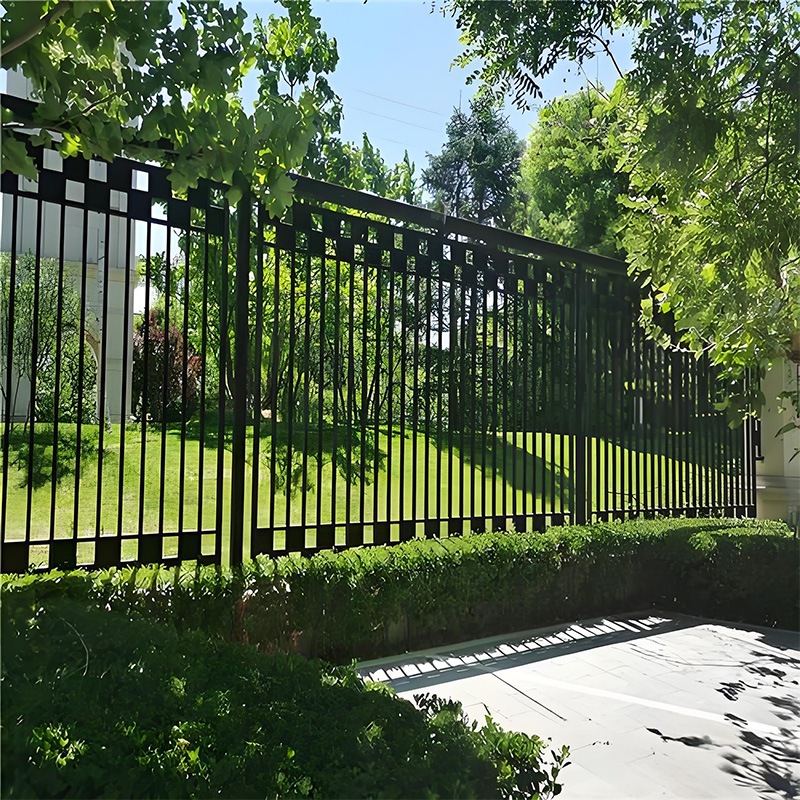
Selecting the right fence is about balancing privacy, aesthetics, security, and budget. With numerous materials and styles available, making an informed choice prevents costly mistakes. This guide explores six outstanding fencing options, complete with data-driven insights and practical tips to match your specific needs.
Horizontal wood fences feature boards running parallel to the ground, creating a contemporary “woven” look. They provide full privacy similar to traditional vertical panels but with enhanced visual depth. Interestingly, their design allows better weather resistance since only posts touch the ground, reducing rot risk :cite[1].
Advantages: High aesthetic value, durable due to minimized ground contact, and less visually confining than solid panels. Drawbacks: Costs 15-25% more than vertical wood fencing due to specialized installation. Horizontal rails also create climbing points, lowering security :cite[1].
Vinyl fencing offers a clean, modern appearance with minimal upkeep—no painting or staining needed. Available in solid panel or semi-private styles (like picket designs), heights range from 4-8 feet for customizable privacy :cite[5].
Prioritize budget and privacy level. For pool safety or pet containment, choose reinforced posts spaced ≤4 feet apart. Some systems feature interlocking panels for DIY-friendly assembly, though professional installation ensures longevity :cite[5].
Wrought iron, aluminum, and steel deliver timeless sophistication while defining boundaries without blocking views. Aluminum mimics wrought iron’s elegance at 30-50% lower cost and resists rust—ideal for coastal or rainy areas :cite[10].
Add custom elements like finials, scrolls, or powder-coated colors. Aluminum’s lightweight nature eases installation, while steel provides maximum strength for high-security needs :cite[10].
Chain link remains a top choice for economical, functional fencing. Galvanized steel mesh withstands heavy use, though it lacks visual warmth. Installation tip: Set posts below the frost line with concrete footings angled slightly upward to prevent frost heave :cite[3].
Composite blends wood fibers and recycled plastics, offering wood-like beauty with plastic’s resilience. It won’t warp, splinter, or fade, making it perfect for eco-conscious homeowners. Brands like Farence emphasize sustainability in sourcing and production :cite[7].
Combine materials strategically—e.g., stone bases with metal sections or wood panels with aluminum posts. This approach maximizes durability where needed while enhancing curb appeal.
| Type | Cost per Ft* | Lifespan | Best For |
|---|---|---|---|
| Horizontal Wood | $25-$45 | 15-20 years | Modern aesthetics, privacy |
| Vinyl | $30-$50 | 20-30 years | Low maintenance, suburbs |
| Ornamental Metal | $40-$100 | 25+ years | Security with elegance |
| Chain Link | $10-$20 | 20 years | Budget, large areas |
| Composite | $35-$60 | 25+ years | Eco-friendly, durability |
*Includes materials and professional installation
Step 1: Define Your Needs
Identify priorities: Is it privacy (choose solid panels), security (metal/composite), or curb appeal (horizontal wood/ornamental)? Measure your perimeter accurately.
Step 2: Set a Budget
Costs vary widely. Vinyl and chain link offer mid-range and budget options, while metal and composite command premium prices. Include 10-15% extra for unforeseen expenses.
Step 3: Check Local Codes
Height restrictions, setback rules, and material bans exist in many areas. Homeowner associations (HOAs) often add further limitations.
Step 4: Compare Materials
Use the comparison table above to shortlist options matching your climate and lifestyle. For example, humid regions favor vinyl or aluminum over untreated wood.
Step 5: Professional Consultation
Reputable installers like Farence Fencing assess terrain challenges (slopes, soil) and handle permits. We team observed in a 2025 case study that professional installation reduces alignment and durability issues by 70%.
⚠️ Warning: Critical Installation Errors
Poor Post Setting: Posts not sunk below the frost line or without concrete footings risk shifting. In Maine, a $93,000 fence failed prematurely due to improper site assessment :cite[9].
Ignoring Slope: Horizontal fences and rigid panels struggle on inclines, creating gaps. Vertical fences or stepped/racked installations adapt better.
DIY Overreach: Complex materials (e.g., wrought iron) require welding expertise. Improper installation voids warranties and compromises safety.
✅ Purpose Defined: Privacy, security, aesthetics, or pet containment?
✅ Budget Finalized: Includes materials, labor, permits, and future maintenance.
✅ Local Regulations: Height limits, boundary setbacks, and HOA rules checked.
✅ Material Selected: Matches climate, terrain, and desired lifespan.
✅ Professional Vetted: Installer licensed, insured, and reviewed (e.g., “Fence contractors near me”).
Vinyl, aluminum, and composite last 20-30+ years with minimal maintenance. They resist rot, insects, and weathering better than untreated wood :cite[5]:cite[10].
Yes! Vertical fences adjust via stepped panels or contouring. Avoid horizontal designs on slopes—gaps will compromise privacy :cite[1].
Quality fencing yields 50-70% ROI. In our 2025 analysis, homes with ornamental metal or composite fences sold 5-7% faster due to enhanced curb appeal.
Choosing a fence involves weighing design, function, cost, and longevity. Horizontal wood and vinyl excel in style and low upkeep, while metal and composite offer strength and sustainability. Remember: professional installation prevents costly errors. Use this guide to make an informed choice—your perfect fence awaits!